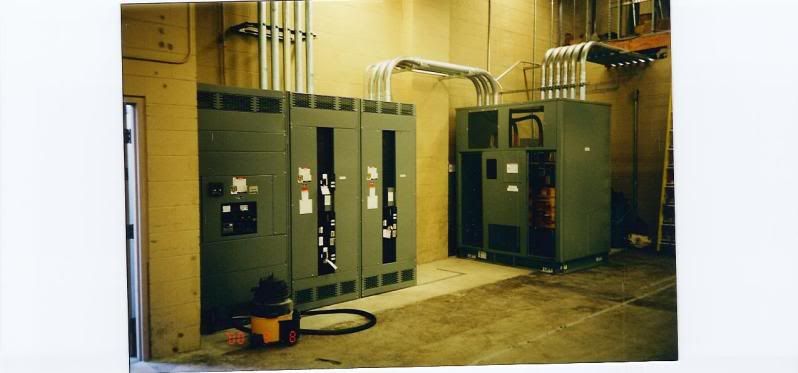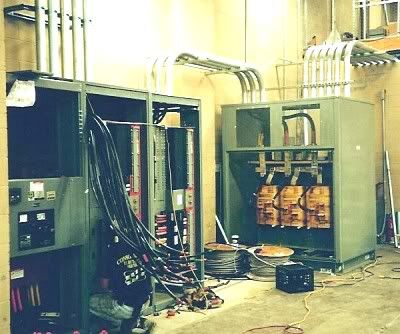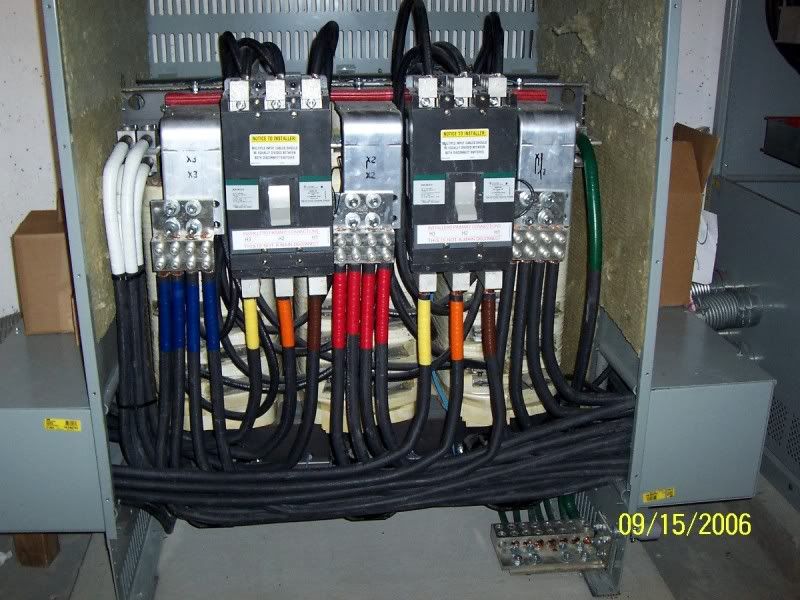chevyx92
Senior Member
- Location
- VA BCH, VA
Is this legal? I had never seen this before until now!
What part confuses you ?
Just never seen it out the top before. Have you?
There is a raceway entering both the primary and secondary sides of the cabinet. Does the primary come from inside the building also?
I doubt that this transformer is utility company owned or controlled based on the installation and the fact the primary seems to come from inside the building.
To me it looks customer owned and I see no NEC violation.
I agree as well but, if this were a dry type transfomer, I would say there probably would be a violation.I agree, this is most likely a customer owner transformer and I don't see an NEC violation either.
Chris
I agree as well but, if this were a dry type transfomer, I would say there probably would be a violation.
Roger
Possible NEC issue: Is the padmount listed for top entry of conduits? Despite the roof, drilling into the top may make water entry possible.
If the padmount has no restrictions on top entry, then I can agree with the majority that there is no problem.
Is this legal? I had never seen this before until now!
I don't think it would fly in Mass, transformers hum & vibrate and it's standard practice here to change over to flex to prevent vibrations loosening connections, fittings.
You think it is going to vibrate that much? How will they ever keep terminations tight? Or the lock bolt on the door tight?
I don't think it would fly in Mass, transformers hum & vibrate and it's standard practice here to change over to flex to prevent vibrations loosening connections, fittings.



there's potential vibration from traffic in this install, imho.

